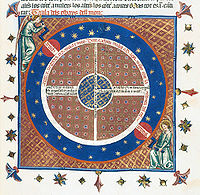Dynamics of the celestial spheres

Imagine you are playing with a bunch of balls of different sizes that are all floating in a pool of water. Now, imagine that these balls are all different planets and the pool of water is space.
These planets have different shapes, sizes, and masses. This makes them move in different ways around the sun, which is like the biggest ball in the pool.
Now, let's pretend that we want to figure out how these planets move and why they move the way they do. This is what we call the dynamics of the celestial spheres.
We can use something called gravity to help us understand how the planets move. Gravity is a force that pulls objects toward each other.
So, the sun's gravity pulls on the planets and makes them orbit around it. Some planets are closer to the sun and orbit faster, while others are farther away and orbit slower.
Also, the planets are not the only things moving in space. There are also moons, asteroids, comets, and other things that are all affected by gravity. So, the dynamics of the celestial spheres can get pretty complicated.
But by studying the movements of these celestial bodies, scientists can learn a lot about our solar system and even the universe beyond.
These planets have different shapes, sizes, and masses. This makes them move in different ways around the sun, which is like the biggest ball in the pool.
Now, let's pretend that we want to figure out how these planets move and why they move the way they do. This is what we call the dynamics of the celestial spheres.
We can use something called gravity to help us understand how the planets move. Gravity is a force that pulls objects toward each other.
So, the sun's gravity pulls on the planets and makes them orbit around it. Some planets are closer to the sun and orbit faster, while others are farther away and orbit slower.
Also, the planets are not the only things moving in space. There are also moons, asteroids, comets, and other things that are all affected by gravity. So, the dynamics of the celestial spheres can get pretty complicated.
But by studying the movements of these celestial bodies, scientists can learn a lot about our solar system and even the universe beyond.
Related topics others have asked about:
